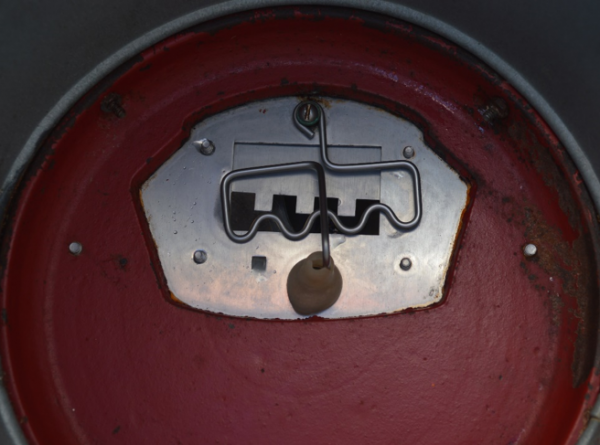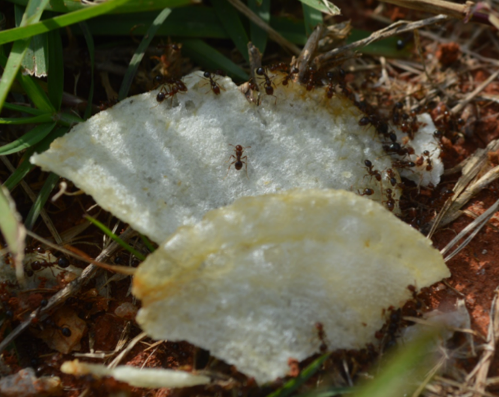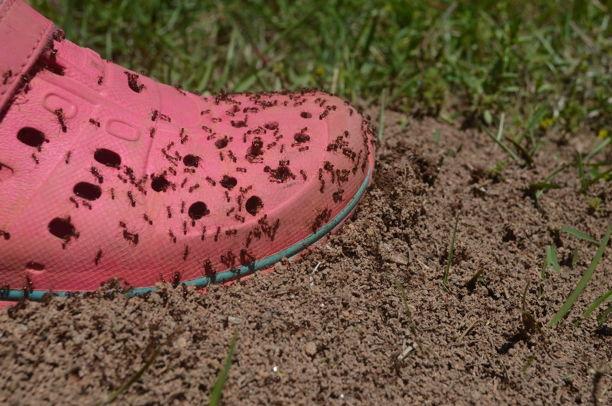Crop Production

Fire ants can be a major problem in the Southeast and even in other parts of the country. Any outside area including home lawns, gardens, parks and athletic turf among others are areas that probably need to be treated for fire ants. Areas around fruits and vegetables may also require management. Many growers who have “pick your own” farms—including strawberry, blueberry, muscadine, blackberry, and some vegetables—may need to treat to keep their customers or employees bite-free.
Treating Fire Ant Mounds
There are fire ant control products for many different area types. Many products for broadcast and mound treatment can be used on lawn areas, but only a few products are labeled for fruit and vegetable production areas. Broadcast baits are the easiest and most economical for use in larger areas because it is not necessary to locate individual mounds.
Always read the bait product labels to for information on application sites and usage amounts. There are often major price differences between baits, broadcast insecticides, and individual mound treatments. To ensure a purchase of the best product for your situation, read the label before buying and calculate the cost per acre.
Fire ants travel as far as necessary to find food. It is possible to treat the lawn area around—but not in—the garden or orchard site with a product labeled for lawns while still effectively manage the ants in the adjacent site. Some baits are only available in large package sizes designed to treat twenty-five acres or more, but others are available in one pound containers for smaller areas. The baits do not keep well, so purchase only the amount needed.
Broadcasting a fire ant bait at the right time will manage the mature colonies as well as the young colonies that have not constructed a visible mound.
How to Apply Fire Ant Bait
Many baits recommend an application rate of one to two pounds per acre. This brings up the question, “What type of equipment is best for applying fire ant bait?” Fertilizer spreaders do a great job of applying fertilizer, but are not capable of applying the fire ant bait in the small amounts recommended per acre. Even if it were possible to close the spreader gate to limit bait spread, the fire ant bait is oily and will compact. For this reason, the bait will not flow freely through the hopper. The use of common fertilizer spreading equipment is not recommended with fire ant baits.
Hand Held Box Spreader

The bottom of the fire ant spreader with an agitator. This spreader has a gate similar to other ATV spreaders.
On a small scale of five acres or less, hand held box spreaders do a good job. It does not have to be filled to the top and with that small amount, compacting should not be a problem. Adjusting the gate and the spinner speed can be tricky. The bait may not flow through the gate if it is only open a little bit and too much bait can flow out when opened more. Keep in mind that if it is easy to see the bait flowing out of the spreader, it is likely that too much bait is being applied. The goal would be to apply around 10 flakes of bait per square foot. Without extra care, much more bait than necessary could be applied. Proper bait applications are dependent on correct use of the gate, traveling at the appropriate speed, and applying the correct amount. There is nothing wrong with applying half the needed amount and going over the area twice. It does not take too much time to cover several acres with a box spreader.
Herd Seeder
For large areas—including parks, pastures, fruit farms, and other areas of 10 acres or more—a larger spreader may be needed. The best method is to use a herd seeder. Alabama Cooperative Extension has more than 40 of these available to borrow. The spreaders can be hooked up to ATVs, trucks, or trailers. They are specifically designed for fire ant bait applications. They have an agitator positioned in the bottom of the hopper that will shake the compacted bait and allow it to flow through the blocking plate and onto the spinner. It is the agitator and blocking plate that separates this spreader from others.
Proper Use of Fire Ant Bait
Bait Application

Use potato chips to determine if fire ants are actively foraging.
The baits should be applied when the ants are actively foraging. This means the baits should be applied when temperatures are between 70o and 95oF, and not before or after a rain. The label will tell you the best times to apply the baits and to what sites the bait can legally be applied. Keep in mind that the baits are only good for a short period of time after the application, so ensure conditions are right.
There is an easy trick to help determine when to apply the bait. Put out some greasy potato chips or crackers around the site. Wait a few minutes and check the chips. If ants are covering them up, then it is a good time to apply the bait. If not, the application may need to be postponed to a later time.
The best time to apply fire ant bait in problematic areas is during the spring and fall, but this can be site- and weather-dependent. Extension professionals typically do not recommend baiting in the spring any earlier than May. A second application can go out in September or October.
Bait Storage
When using a fire ant bait or any other pesticide, always follow the directions on the label. These baits need to be kept in a cool, dry place. Once opened, baits should be used quickly. Only purchase the amount needed and use immediately. The baits use an oil to attract the ants and the oil goes bad if kept too long or stored improperly.
Baits become rancid when stored improperly or for too long. The flakes of bait consist of a carrier such as corn grits, a food attractant such as vegetable oil, and an insecticidal active ingredient that exerts a toxic effect on the ants.
Keep in mind that grits alone—or other home remedies like gasoline and boiling water—will not manage fire ants. The oil is the important ingredient that goes bad over time or when not stored properly. Purchasing bait at one store, then leaving it in the hot car while shopping in a few other stores is not a good idea.
If the oil is bad, the ants will not pick up the bait. There is a way to check old bait to see if it is good, much like using the potato chip or cracker to check for foraging. Put a little bait out in a couple of places along with a potato chip. If ants come to the chip but not the bait, the bait is probably bad. If ants do not come to either one, the conditions may not be right for them to be actively foraging. In the heat of the day in the sunshine, it is best to put the bait in a shaded area.
For more information—or to ask an Extension professional a question—give your local Extension office a call.

